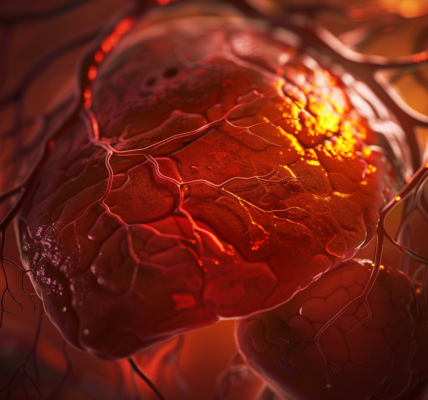New Migraine Treatment Atogepant Shows Promise in Reducing Symptoms and Medication Dependence
Recent advancements in migraine treatment have brought promising news for those suffering from chronic migraines, particularly for patients who frequently rely on pain medications. A phase 3 randomized controlled trial has demonstrated that atogepant, a calcitonin gene-related peptide (CGRP) inhibitor, significantly reduces the number of migraine and headache days for patients, as well as their reliance on acute pain medications.
The study, published in the journal Neurology, involved 755 adults diagnosed with chronic migraines, characterized by experiencing 15 or more headache days per month, with at least 8 of those days qualifying as migraines. Participants were divided into three groups: one receiving a placebo, another receiving atogepant at a dosage of 30 mg twice daily, and the last group receiving 60 mg once daily. The treatment lasted for 12 weeks, during which participants documented their migraine occurrences and medication usage in electronic diaries.
Dr. Peter J. Goadsby, a leading researcher from King’s College London, emphasized the challenge faced by many migraine sufferers who often resort to pain medications to manage their debilitating symptoms. Unfortunately, overuse of these medications can lead to rebound headaches, complicating the treatment process. Dr. Goadsby noted, “More effective preventive treatments are needed,” and the results from this trial suggest that atogepant could be a viable option.
At the start of the trial, a significant 66.2% of participants were identified as having acute medication overuse. This was determined by their usage of simple analgesics, such as aspirin, nonsteroidal anti-inflammatory drugs, or acetaminophen for at least 15 days a month, or triptans and ergots for at least 10 days a month. The findings revealed that for those with medication overuse, atogepant 30 mg administered twice daily resulted in an average reduction of 3 fewer migraine days and 3 fewer headache days each month compared to the placebo group. Meanwhile, the 60 mg once-daily dosage led to 2 fewer migraine days and 2 fewer headache days compared to the placebo.
Moreover, both atogepant dosage groups reported a reduction of 3 days in their reliance on pain medications when compared to the placebo group. Encouragingly, similar outcomes were observed in participants who did not have a history of medication overuse, indicating the broader efficacy of atogepant.
Among participants with medication overuse, an impressive 45% of those in the atogepant 30 mg BID group and 42% in the 60 mg QD group experienced a decrease of 50% or more in their average monthly migraine days. These results highlight the potential of atogepant as a preventive treatment for chronic migraine sufferers.
As the medical community continues to explore innovative solutions for migraine management, the findings from this trial underscore the importance of developing effective preventive therapies. Atogepant’s ability to reduce both the frequency of migraines and the dependence on pain medications could represent a significant advancement in the treatment landscape for chronic migraine patients.
With ongoing research and clinical trials, there is hope that more patients will find relief from the debilitating effects of chronic migraines, ultimately improving their quality of life. As the understanding of migraine pathophysiology deepens, treatments like atogepant may pave the way for more targeted and effective interventions for those affected by this condition.





